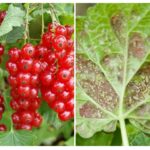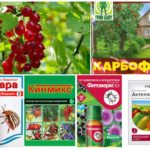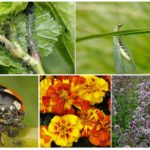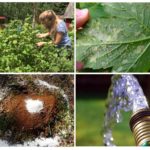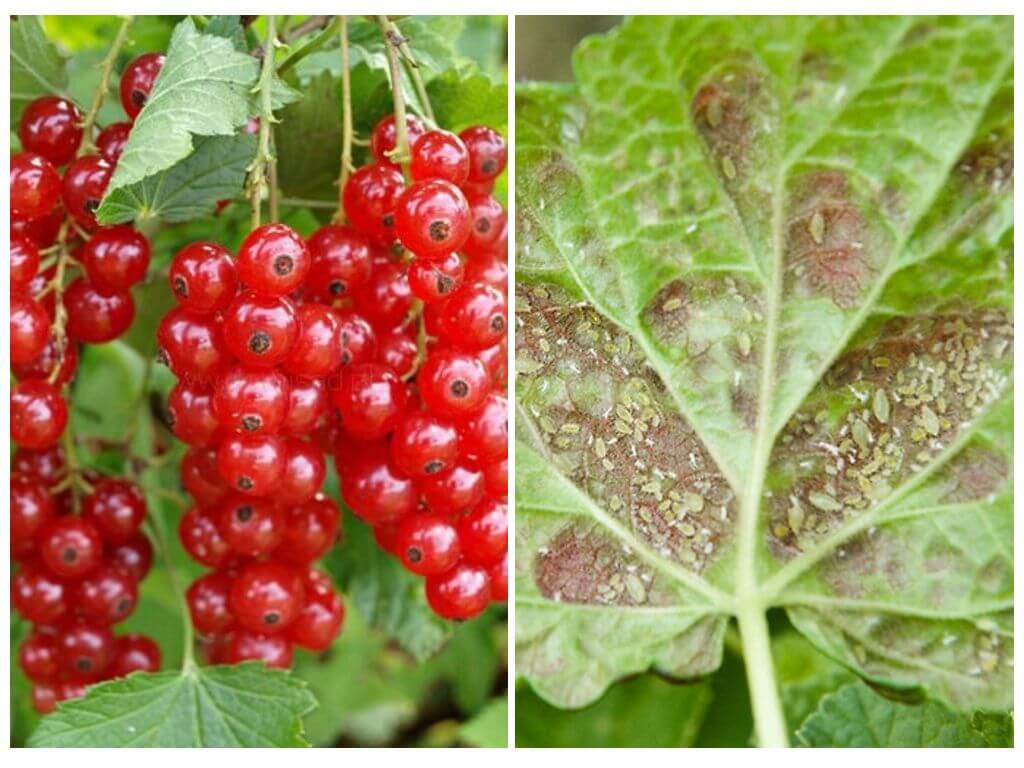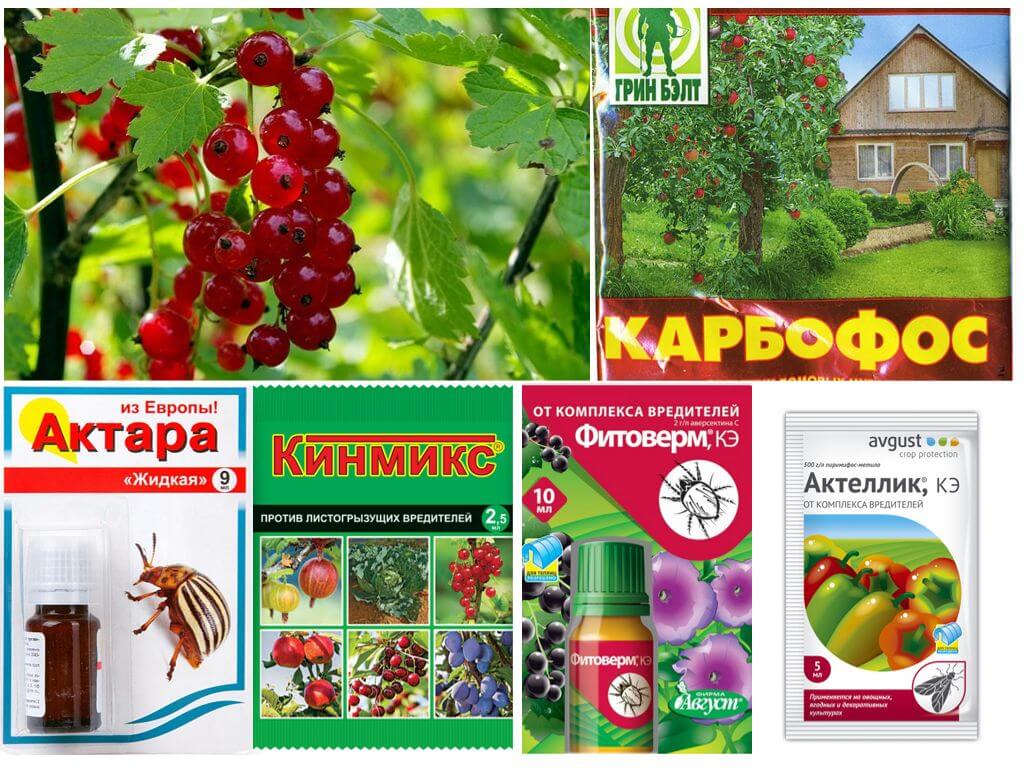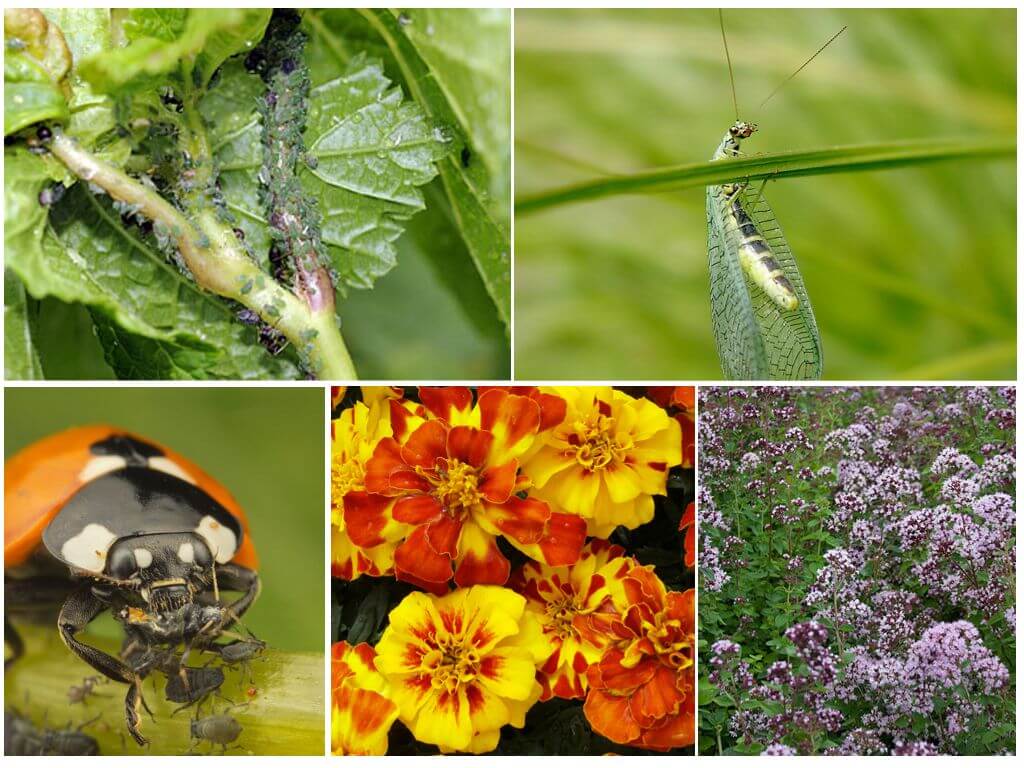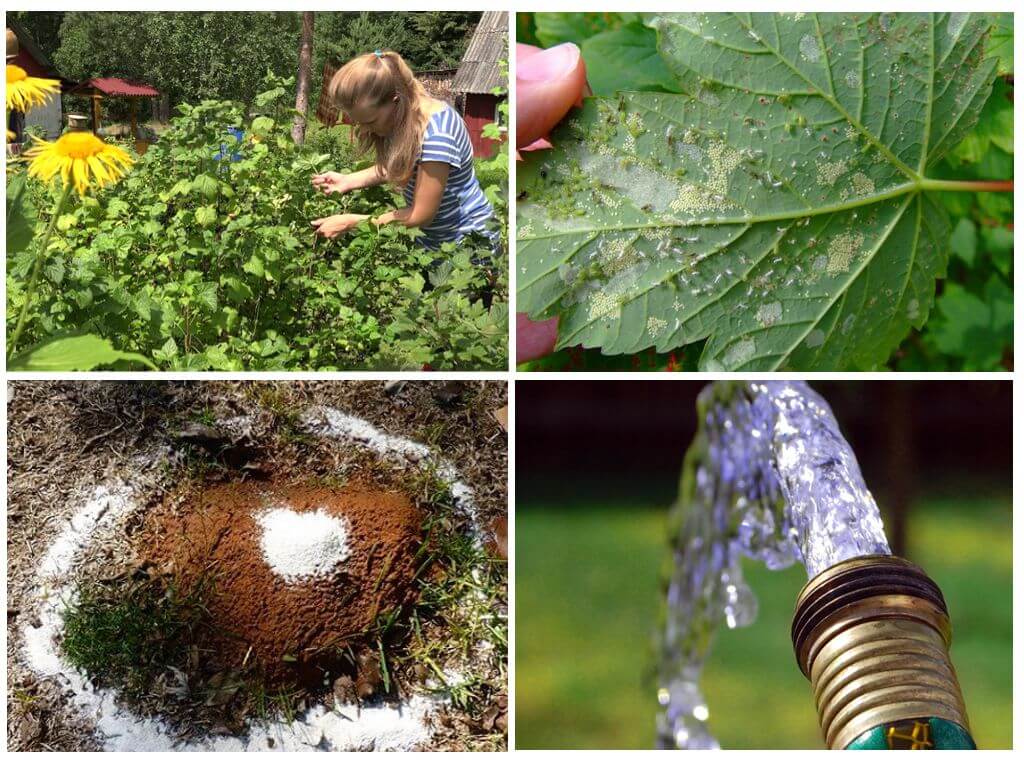Gallic aphid currant
- Gallic aphid currant
- Chemicals against pests
- Biological methods of struggle
- Aphid Prevention
Gallic aphids on currants feed on vegetable juice and cause fungal infections of the leaf. The fruit bush tries to heal wounds, as a result of which red leaves appear on the leaves, and its yield drops sharply. Culture weakens, discards the leaf and eventually dies.
Folk ways
Red aphid has a small size - only 2.2 mm. It looks on the photo sheet, as a small bright spot.It is difficult to notice a single individual, but the accumulation of pests is evident even to an inexperienced gardener. As soon as a small gray spot appeared on the inside of the foliage, you need to act.
On a note!
The life cycle of the gall aphid is short, but the female is quite prolific. In one summer season, about 15 generations of this insect are replaced by currants.
While the pest did not have time to breed, you can apply the popular methods of struggle:
- Kilogram tobacco powder poured 10 liters of warm water and sent for a day in a dark and warm place. Infusion filter, add four tablespoons of liquid soap.
- Four kilograms of tomato tops are crushed and filled with 10 liters of liquid at room temperature. The tool is closed with a lid and sent to knock in a dark place, then filtered.
- A kilogram of hot pepper is poured with cold water and brought to a boil. After holding on a small fire for one hour, and then 48 hours insist. The tool is filtered and bottled. The concentrate is diluted in water (75 ml per 5 l), when a plant treatment from aphids is needed.
- The bucket is half filled with marigolds and poured over with water. Insist means 24 hours, then filter and bring to a volume of 10 liters.
To combat the gallic aphids on the currants should be effective destroy colonies of garden ants. Insects protect the pests because they give them sweet juice. Anthills should be dug and poured with boiling water, covered with ashes or transferred to another place.
On a note!
Gallic aphid does not like to settle on black currants. These bushes are attacked by gooseberry aphids.
To destroy aphids also use:
- ammonia;
- soap;
- soda;
- milk and iodine;
- Coca Cola;
- vinegar;
- garlic;
- celandine;
- ash;
- mustard;
- vodka;
- green soap;
- Birch tar;
- boric acid.
Chemicals
Gall aphids should not be used. chemicalswhen the plant has flowers or fruits. It is possible to process currants from gallic aphids before flowering and after harvesting.
The first treatment kills living individuals and their eggs. The second is aimed at ridding the currant bush of hibernation.
On a note!
You can spray plants only in dry and calm weather.It is better to choose the days when the sun is hidden behind the clouds. The procedure is carried out until ten in the morning or in the evening.
When working with toxic substances, you should protect your face with a mask and respirator, and wear a headscarf or a plastic cap over your head. Wear rubber gloves on your hands. After the procedure, things are sent to the laundry.
On the market there are the following preparations for gallic aphids:
- Drug Aktara protects currants for two months. The first results are visible after four hours.
- The drug is a complex action Tanrek.
- Kinimiks - insecticide helps to get rid of gall aphids and other pests.
- Inta-Vir. It affects the nervous system of insects. Aphids die from paralysis.
- Actellic - if the infection is strong, then one vial is dissolved in a liter of water.
- Karbafos - a solution is prepared from the powder (75 g of dry matter per 10 l of water) and currant bushes are sprayed with it.
- Bio Spark Remedy paralyzes insects and causes their instant death. Does not affect eggs.
- Drug Fitoverm quickly destroys gall aphid and other dangerous insects. For the solution should be diluted in a liter of water 4 ml of poison.
On a note!
In early spring, before the appearance of leaves on the currant, root spraying is carried out with a solution of mineral fertilizers. 400 g of potassium chloride, 500 g of urea and the same amount of nitroammofosca are mixed for it. The mixture is poured with a bucket of water and infused for one hour. This remedy feeds shrubs and destroys wintering eggs with gall aphids.
Physical methods
Leaf gallic aphids before the onset of cold weather lays the plants under the bark of eggs that must survive the winter. In the spring, with the advent of the first leaves, pests hatch from the masonry and begin to destroy the currant bush.
To prevent gall aphids, the plant is watered with boiling water. He awakens dormant buds and destroys the hibernating eggs.
On a note!
Water for processing the bush is heated to a temperature of 50-60 degrees.
Methods for dealing with aphids include circumcision of infected shoots. Branches damaged by a pest are burned in a fire.
At the site attract beneficial insects: ladybirds and gold-eyed. To do this, next to the currant planted nectar-bearing flowers:
- oregano;
- marigold;
- daisies;
- dill;
- anise.
To prevent the plants from attacking the red-bull aphid, they are sowing dill, onions, tomatoes, and coriander next to them.
Leaves must be watered. Strong water pressure will kill ants and aphids. Watering should be done on an overcast day or early in the morning, until the sun began to burn.
If the plant is too infected and no drugs act on it, then the bush should be cut in the fall “at the root” or completely dig it out. It is necessary to sprinkle overdried earth with ashes or tobacco.
Prevention
Gallic aphid on red currants will not appear if you carry out timely prevention.
If you suspect aphids, wash the leaves with soapy water thoroughly. It clogs the skin of aphids, and she can not breathe. Treatment should be carried out every evening during the week to kill the hatched individuals.
On a note!
For a soap solution, take a bar of tar or household soap, rub it on a fine grater and pour 10 liters of warm liquid.
Keep the ground next to the bush clean. It is necessary to remove all weeds and carry out mulching with celandine, which is poisonous for aphids.
The following steps should be taken to protect the plant:
- destroy anthills;
- spread out next to the bush pieces of scotch, sticky side up;
- provide the plant with sufficient watering;
- inspect the leaves and shoots.
It is necessary to follow the feeding of the bush. Nitrogen fertilizers reduce the ability of plants to resist pests and diseases.
Next to currant bushes, it is necessary to plant fragrant herbs that attract ladybirds and scare away ants and aphids. These are marigolds, anise, dill, onion.
Good results will be achieved if you put together all the ways: prevention, chemical and national control measures. It is not always possible to get rid of aphids in one year. Under the bark there can be eggs from which new individuals will appear. But if you do not give up, the pest will completely disappear.

